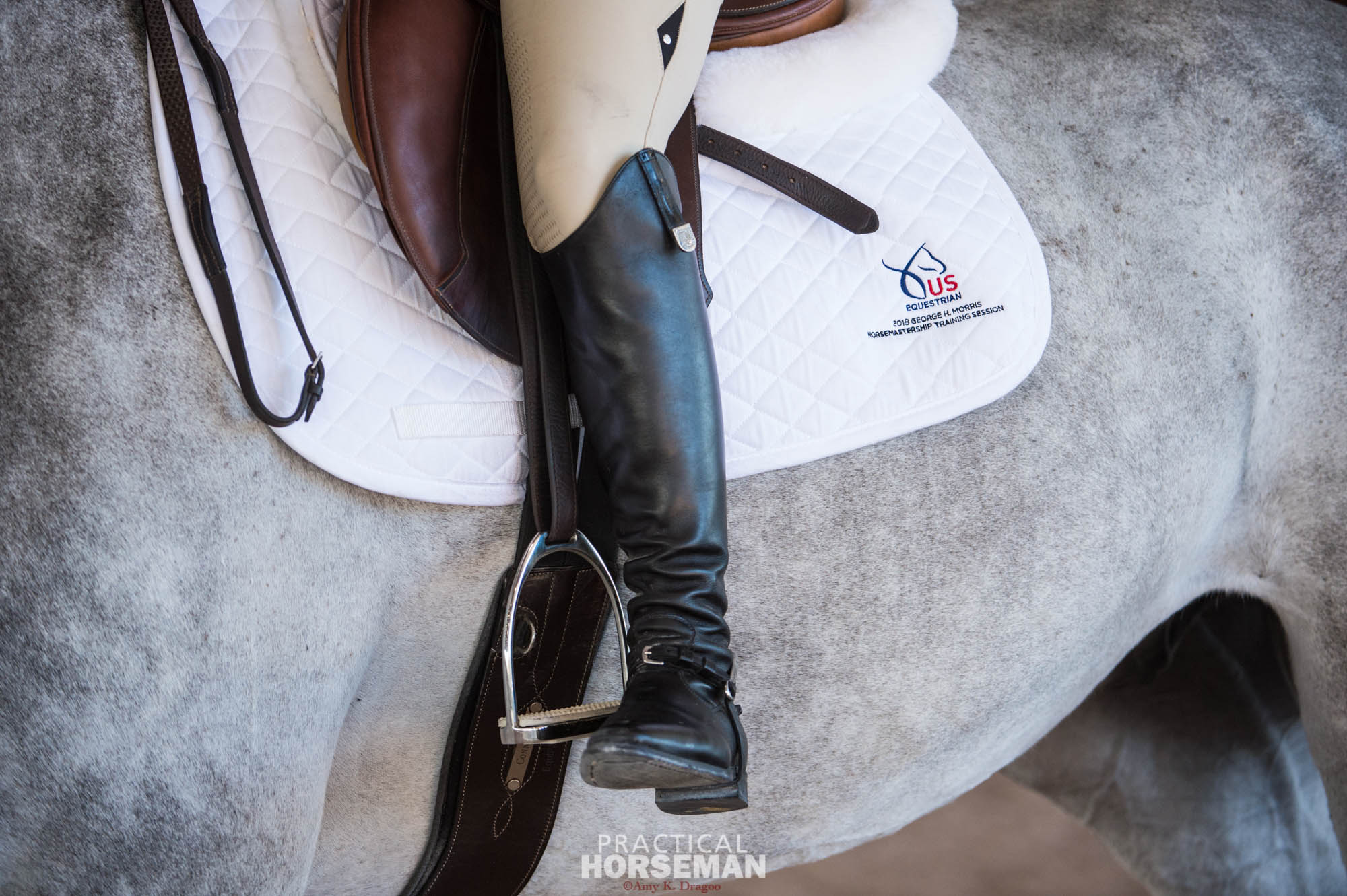
Olympic veteran Anne Kursinski started off the first day of the George H. Morris Horsemastership Training Session in the saddle, giving a flatwork demonstration to the 12 young and talented participants with play-by-play narration of what she believed they should be striving toward.
Once the riders were mounted, Anne put them through their paces, instructing them to work the whole horse with lots of transitions between and within gaits, a healthy dose of lateral work and, of course, no George Morris clinic would be complete without abundant no-stirrup work.
Here are five top tips boiled down from today’s session:
1. Body Awareness and Position is Key
It’s paramount to control body position to speak the horse clearly. The rider’s whole body influences the horse’s whole body to become one unit. “Position, position, position on the flat,” Anne stressed. This will help you to not only use your aids correctly, but also at the right moment. “Horses will try to put you in a place that’s less effective,” she explained. It’s up to the rider to have the discipline and awareness to react appropriately. Anne articulated that correct body awareness and position is so much of what makes a rider successful, using examples of greats like Beezie Madden and McLain Ward.

2. No-Stirrup Work Increases Effectiveness
Anne had riders work without stirrups in the walk, trot and canter as well as in lateral movements and transitions. She noted that most of the riders’ transitions were better when they didn’t have their stirrups to rely on because they were sitting deeper, with a better feel of the horse. Rider Hannah Loly agreed that she felt more connected to the horse without her stirrups because it forced her to use her whole body.

3. Knot Your Reins for Better Connection
Anne knotted each rider’s reins, making them noticeably shorter. “Ride with long arms and short reins,” said Anne. This allowed riders to feel a better connection through the bridle and keep their hands steady. Clinic participant Cecily Hayes noted that the shorter reins helped to prevent her horse from evading the bit and for Caitlyn Connors, the knot kept her hands better placed.

4. Think Like a Horse
From the moment Anne began teaching, she encouraged riders to learn to communicate with the horse in their language. “Horses won’t ever think like human beings, but human beings can think like horses,” Anne said. The rider must learn to have a two-way conversation with the horse and to work with him, not against him. This includes consistency with aids, developing timing, feeling and learning when to be strong, when to be light and above all to always focus on the horse. The rider should learn their horses inside and out, discover the strengths and weaknesses. “The sign of a great rider is a happy horse,” said Anne.

5. Think of Flat Sessions as the “Gym” for Your Horse
Throughout the clinic, riders lengthened and shortened gaits, made frequent transitions between gaits and practiced leg-yield, shoulder-in, haunches-in, half-pass and counter-canter. Anne compared flatwork to a horse going to the gym, doing his weight training, yoga, Pilates, even acupuncture. This develops a more athletic, elastic, sounder and stronger horse. Riders can’t expect this to happen overnight, however. Self-carriage and development takes time and consistency.
Above all else, Anne emphasized the importance of always thirsting for education. “There’s so much out there to learn. This is just scratching the surface,” she said. Anne also encourage riders to pay attention to the details. “Always strive to be your best … As George would say, ‘perfect practice makes perfect.’”











